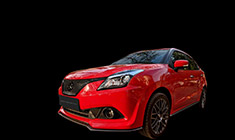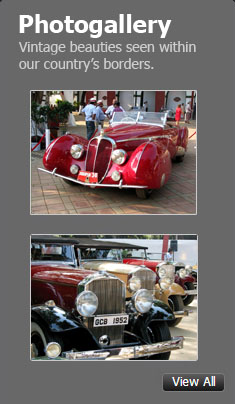News
Upgraded from a 25 year old Santro to the Grand i10 NIOS: Quick comparo
I think that we made the right decision to go over to the i10 Nios. While most look for an upgrade in a bigger car, we looked for an upgrade in tech, with a similar form factor.
BHPian DJAG7 recently shared this with other enthusiasts.
This is my first review on TeamBHP after reading multiple reviews since I was 9. I am now 21 and have learned about cars from this forum for years, and all my knowledge has come from here and some car magazines and YouTube reviews. Please correct me if I am wrong, I’ve just got my license and have started to drive recently. However, this review is about a car I grew up with, and the car that replaced it this year, 25 years later.
The Backstory:
To give you a bit of history, my family owned a second-hand HM Ambassador in the 80s and up to the late 90s, then a second-hand Maruti Omni for a few months (which was returned to the seller due to legal issues for the same price). It was almost the dawn of the new century, and new brands were making their way into India, such as Hyundai, setting up plants and factories all over to manufacture the next generation of Indian cars. Then came a revolutionary car, the Hyundai Santro DX in 1998.
My Grandad was the first to see this car in a showroom near a bank in Mumbai. It was the first day of launch, and all Indians are usually weary till a product kicks off. But standing there as a tallboy, looking so impressive, it attracted the hearts of my elders, and off they were to buy the car. It was particularly in the DX variant, with features such as front power windows, keyless entry, rear wiper, and defogger. It had no music system but had placements for speakers and a single DIN. Powered by a 999 CC 4 Cylinder 12- Valve DOHC Engine, it made 55 PS of power (which has probably come down over the years) and had power steering. It costed around 4L OTR at the time of purchase ( A Maruti 800 was 2,50,000 at that time)

Later on, they realized during delivery, that the car was one of the early units of the assembly line, and the dealer quoted that it was one of the first 100 Santros in India that arrived as a CKD from South Korea. Not just one of the first, it might outlive one of the last of the 90s Santros and that’s thanks to us using it carefully, clocking just around 35K on it. It wasn’t barely used, but it did a long trip occasionally to a village 150 km north of Mumbai and then was transferred to Hyderabad in 2005.
But times have changed, Governments have changed and so has Hyundai. With new legislation kicking in to get rid of cars over 15 years of age or having to recertify the car with fitness regulations, we were on the search for a new car to replace our aging Santro and a car that would live up to the former. We wanted another hatchback, to allow for easier city driving, and no one in my family felt the need for a bigger car. This also prompted the need for an automatic, but we were budget-constricted to a low amount of 10L OTR.
Cars that were looked at:
- From the MS Stable: Alto K10, S-Presso, Wagon R, and Ignis
- Renault Kwid
- Hyundai Nios
- MG Comet
We discarded the Renault Kwid first, as it was too claustrophobic, and its AMT is one of the worst. Lack of a creep mode, manual mode, and many others ensured it didn’t reach our shortlist.
Alto K10 and S-Presso just felt cheap. We were initially excited as it’s a cheap AMT, but the price it came to was a little lower than a mid-spec WagonR or Ignis. Celerio, was even more expensive than the WagonR/Ignis with just a 1.0L engine. So all the 1L Maruti cars were avoided.
MG Comet almost made our final list, it matches our requirements tremendously, but the fact that it was an EV, brought a big bane, especially since we live in an apartment that has no time frame for the installation of EV charging points. Many residents have EV scooters and are forced to take their batteries up and charge them, as there is no solution to charge as of yet.
Wagon R and Ignis it was then. If we had to buy a new vehicle, Ignis was the choice. Better features than the WagonR for as little as a service charge. But there were many WagonRs (manufacture year post-2020) that stood out in a true value center nearby, and we had our eyes glued on the WagonR for an eye-watering price of 5.2L just for 19K Kms. We live in Telangana with one of the highest car prices in India, so this price was a good one.
But then came the decision, since we aren’t upgrading every few years, why not spend some more, (closer to the budget of 10L) and get something that had a lot more quality and lived up for the time? That’s when we chose to ask for a home TD for the Grand i10 Nios.
TD of the Nios AMT
We scheduled a test drive with Fusion Hyundai Hyderabad, and the TD happened on the same day in the early evening. The i10 Nios was impressive, albeit the non-functional touchscreen (service center issues perhaps). My Grandfather went for the test drive, as he was the only person from our family with a license (I was in the process of acquiring my learner's license at that time), and he loved the way the car drove except for the over-sensitive brakes. The AMT proved to be amazing, showing no signs of head nod that I have experienced in other cars such as Fronx 1.2L and Dzire 1.3 (Friend’s and Family’s car). I couldn’t even feel the shifts and asked the driver to switch to manual just to get a feel, but most went unnoticed on the passenger side. It was a wonderful experience, and everyone was convinced that this car would be the ideal replacement for the Santro. We went ahead and booked it a few days later, in the Sportz AMT disguise (most VFM). Typhoon Silver was not available, but we waited for about 2 weeks for the car to be manufactured and then proceeded with the delivery. It came to around 9.4L OTR after discounts and 12K for accessories
Pictures of the car before the delivery process was initiated.



These were the observations made after multiple visits to the dealer and seeing our own car in the flesh-
Positives:
- One of the best AMTs in India
- 1.2L 84hp engine is good for the city
- Quality surpasses all brands available at this price point
- Cruise Control, Automatic AC, 6 Airbags. Some features that are not seen in this segment.
- Height Adjust and better seating positions
- Rear AC is a boon for the hot summers and for my dog.
- DRL is brighter than most fog lamps. Weird, but functional
Negatives:
- No rear wiper in the Sportz variant. Why is a rear wiper considered a luxury feature?
- No adjustable front headrest, even on the Asta Variant. My Santro from 25 years ago has adjustable headrests, why can't this?
- The bonnet is not easily visible from the driver’s seat.
- Only wired Apple CarPlay and Android Auto.
- Radio audio quality could be better.
- No Split fold seats or adjustable headrests at the front. The UK model gets both of these.
The car arrived on the 16th of February, but we were unable to pick it up for a few days. The final delivery date was scheduled for the 19th of Feb and it worked well.
We added a few accessories, such as a bumper corner protector, body side molding, scuff plates, steering wheel covers and seat covers (they had openings for the side airbags.)


The reason why I started this thread was to compare the two cars, and how much Hyundai has progressed over 25 years. It is just a fun sight to see the actual predecessor of the Santro (The 2018 Santro felt more like a replacement for the Eon). Hyundai has had its ups and downs, with a downgrade in quality for some years and now an improvement. The exterior has seen the most progress with the angled lights, DRLS, and sharp looks from the 20s.


I particularly like the progression of the interiors as well, from dull grey to black/beige and now to this grey color. This color looks nice in the daytime but is prone to getting soiled. Will be obliged to wetwipe the car once in a while.
Hyundai’s Infotainment is slick to use and offers quite a lot of features. The speakers though consumer grade are good enough to satisfy most folk, excluding the audiophiles. The three-band equalizer doesn’t help in improving the sound quality either. It sounds like a flagship headphone from a tech company and not from an audio-focused company which is fine.

I haven’t taken it out on the road yet, because of a busy schedule, but I have driven it around the parking lot. The creep mode is particularly useful, but I still have to get used to the brake and how to moderate the creep function. The reverse parking camera is perfect and guidelines are well calibrated (not adaptive though). Will post later about the driving experience.
The thing I like the most about the interior is the backlit buttons. They are all functional and look so good, especially the 16 buttons on the steering wheel. Backlit buttons define my favorite kinds of interiors, and this lives up to it.

Interiors:
The interiors of the two cars are a stark contrast to most cars available at the same price point, even though they are from different eras The Santro had an interior that was more premium than the cars of that time- the M800, Esteem, Matiz, and others...

The dashboard contours provide extra storage space for the lack of storage spaces elsewhere in the car. In the center console, there exists a provision for a single DIN unit with two speakers attached in the front. The AC in this car takes center position spanning the size of a 2 DIN amplifier, and has sliders to adjust position, lock circulation, and change between cooling and heat with circular vents for all 4 positions that do not close. The i10 follows suit with the middle vents not having the closing function, but the two vents on either side are circular and closable. This does give the interior a slightly sporty look. It also comes with a rear AC which is something missing in the weak AC of the Santro during summers. The car cools fast in the heat, and in 5 minutes or so, it reaches its desired temperature.

The DX variant of the Santro came with an inbuilt Cigarette lighter (12V socket) and Ashtray. These are items we have never used and have only gathered dust, but for the people who have a requirement of using these, it is something that will be sorely missed in today’s cars.

Continue reading BHPian DJAG7's comparo for more insights and information.









_4.jpg)
.jpg)







